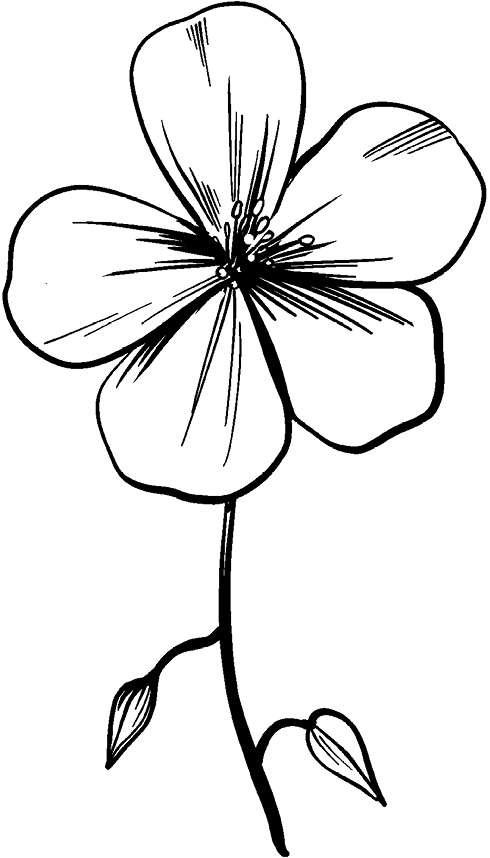Flax and Serendipity

Linum usitatissimum
In the fairy tale Rumpelstiltskin, a poor farmer’s daughter must spin straw into gold to save her life. With Rumpelstiltskin’s help, she pulls it off. This is a neat trick, but it is just fiction. The true story of how flax is turned into fiber is much more fascinating.
Flax is entwined with human history. Woven flax fibers discovered in a cave in the Caucasus Mountains are estimated to be 19,000 to 23,000 years old.25 Please think about that for a moment. In ancient Egypt, linen (the fabric made from flax) was used to wrap mummies, including King Tut. Linen shawls and wraps were often buried in the tombs. Linen is mentioned in both the Bible and Homer’s Odyssey. Flax has been used as fiber for a very long time.
Making fiber from flax is something of a puzzle. There are other plants that more easily suggest fiber; cotton, for example, encases its seeds with fuzzy material. You can see and feel the fuzzy material. It’s easy to understand why early humans used cotton for fiber, but what drew them to flax?
Flax is a wispy-stemmed plant with small, vibrant blue flowers and feathery leaves. Looking at the plant, you would not think there is fabric hidden inside somewhere. Yet our ancestors figured this out and used flax for a multitude of applications, including string, rope, flags, and clothing.
The process of turning flax into fiber is not a simple one. Plants are first pulled from the ground (not cut) and dried. Once dried, the seed heads are removed and the flax is immersed in water until the stems rot. This takes several weeks. Next, there is another drying process and further combing and sorting to get to the usable fiber, which can then be spun and woven.
It is fascinating to imagine the series of happy coincidences that occurred to ensure the discovery of flax as fiber. Perhaps wild flax was uprooted in a wind storm and then dried out; another wind blew the flax into a shallow pond where the stems began to rot; at just the right time the pond dried up; and the flax lay there until a child began to play with it and began pulling fibers from the material that was left. We’ll never really know.
Serendipity, a happy, accidental discovery, is the correspondence for flax. Sometimes serendipity has the mark of fate about it, a feeling that we were absolutely supposed to discover or encounter something. Serendipity is not just about the big events in our lives; there are plenty of small serendipitous events if we are paying attention. The universe opens and we stumble upon a wonderful new book, a quiet hiking path, a musical artist we’d never heard of, or a new person in our lives.
Your personal serendipitous events might not be as momentous as discovering a fiber that clothed humans for thousands of years, but looking for serendipity is another way to tune in to the flow of moments, recognize connections, and be present.
Morning Attunement Questions
• What connections do I have with flax and serendipity?
• Where else in the green world or in my life do I observe serendipity?
• What does this correspondence feel like?
• How can I describe this energetic attribute of serendipity in words or pictures?
• Where does this correspondence of serendipity resonate most strongly in or around my body or in my life?
Daily Integration Questions
• In what ways is the world reflecting flax or serendipity back to me?
• What nuances and shades of meaning do I notice about flax and serendipity?
Evening Reflection Questions
• Where and how did I experience flax and serendipity today?
• How did I embrace the concept of serendipity today?
• What wisdom does flax’s correspondence of serendipity bring to my life?
25. St. Clair, Golden Thread, 23.